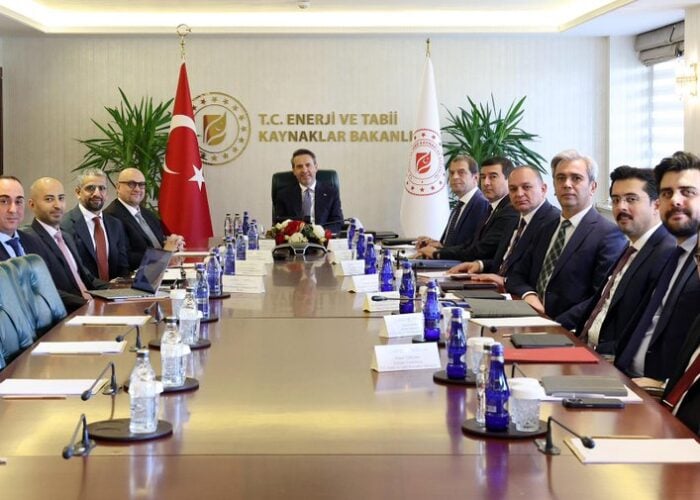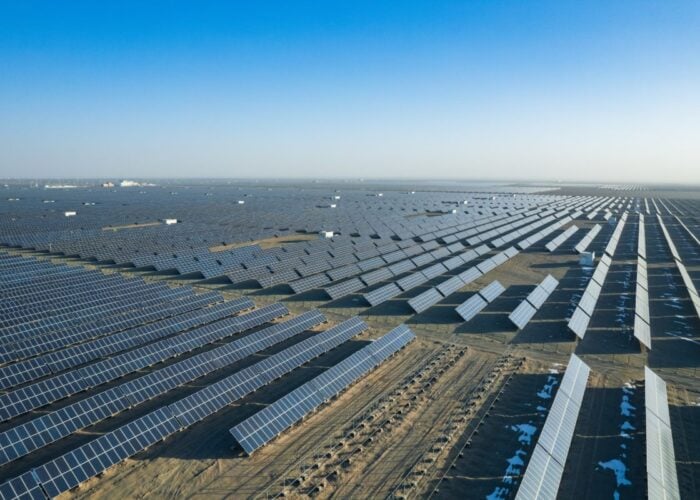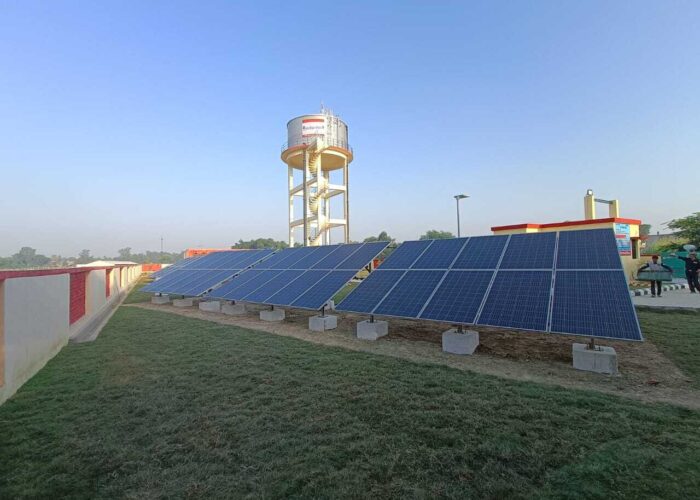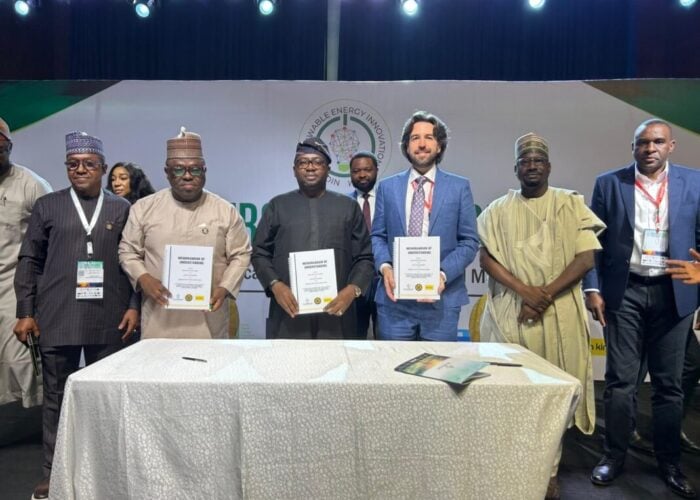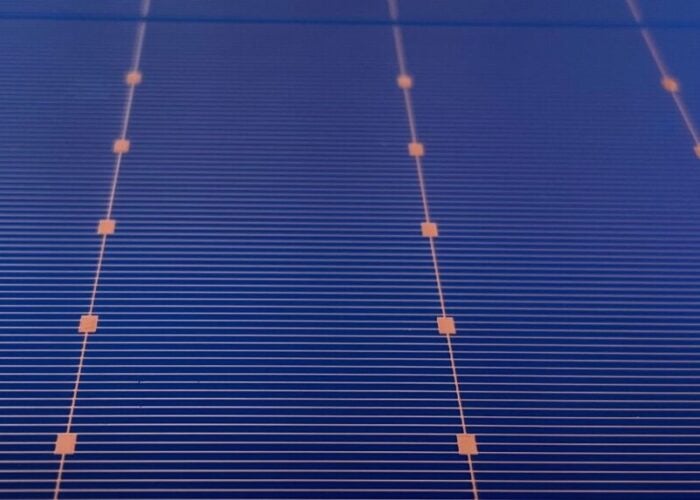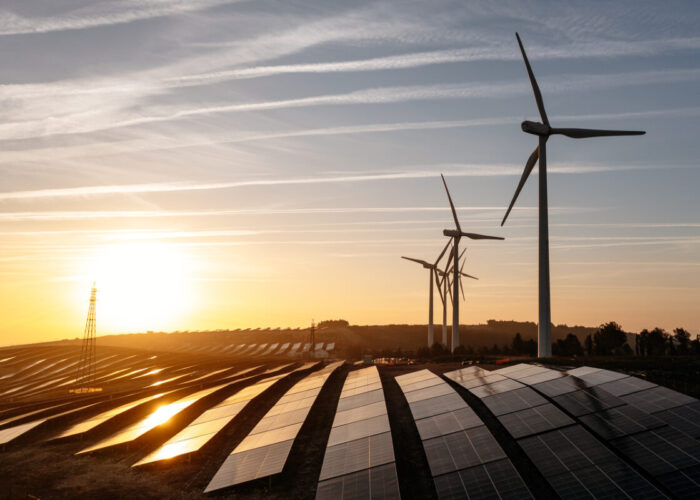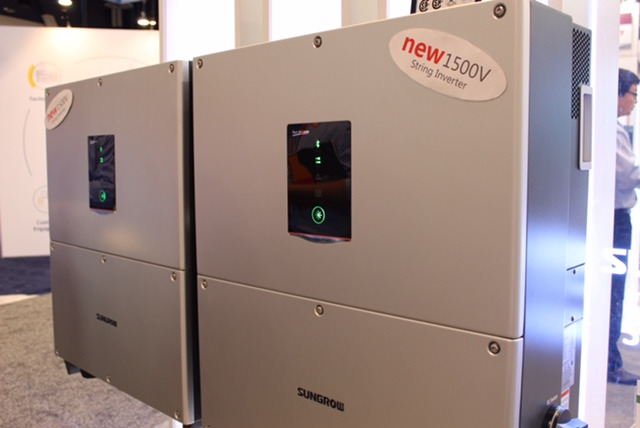
Recently, PV Tech sat down with David Zhao, senior vice president at Sungrow Power Supply and president of the company’s PV & storage division, to gain an insight into the company’s market expectations for 2017, notably outside China, and understand key market and technology trends within the APAC and South East Asia regions, areas that have been key to its continued growth in recent years.
Overall, 2016 was another strong year for Sungrow, the company reporting revenue growth of 31.39% from the previous year, despite well documented ASP pressures throughout the period. With strong downstream growth in its domestic market, Sungrow said it shipped over 9.9GW of inverters to projects in China in 2016.
Try Premium for just $1
- Full premium access for the first month at only $1
- Converts to an annual rate after 30 days unless cancelled
- Cancel anytime during the trial period
Premium Benefits
- Expert industry analysis and interviews
- Digital access to PV Tech Power journal
- Exclusive event discounts
Or get the full Premium subscription right away
Or continue reading this article for free
Among notable achievements in the APAC region were reaching the milestone of 1GW of cumulative installations in India by April 2017 and holding the largest market share in Thailand (32% in 2015, according to IHS Markit). Sungrow is also, according to the market research firm, among the top 5 vendors in Australia, which has predominantly been a residential PV market until this year.
“We have had a lot of success in the APAC region in recent years, notably in Thailand, but also in Japan, South Korea and Australia, so it is an important regional market for us”, said David Zhao. “In 2017 we see more market opportunities in this region, including in Vietnam, as renewable energy becomes a new policy there, supporting PV. Vietnam’s close proximity to China and the fact many Chinese companies are entering the country supports this view.”
“Another change is in Malaysia, which has announced a lot of planned developments. We are very close to that and hope to benefit from these plans. We expect to gain around 50% of the market in Thailand and Malaysia, together with some other emerging markets. So I think for us the APAC market is becoming more and more important.
This year, not only are residential markets becoming more of a focus, but also the energy storage sector. This is also good news for us. This is particularly true of the Australian market. We have already been present in Australia for five years with a focus on the residential sector.”
Japan remains an important PV market in the region, but is one in which it has hitherto proven difficult to gain acceptance and where there is a high barrier to entry.”
PV Tech asked Zhao if Sungrow had found gaining traction in Japan difficult to achieve…
“We entered the Japanese market about three years ago and have slowly gained acceptance. We now have tier 1 customers in the country such as Softbank and Mitsubishi, so Japan represents a good opportunity for us too.
But, with many different grids, each requiring separate testing, we have had to invest a lot of resources to reach the point where we currently find ourselves. We see Japan as a stable and valuable market long term, as well as being important for energy storage for the residential and utility sectors. We provide a hybrid system for residential from 3kWh to 5kWh as well as supplying a battery solution. We also have systems for the commercial and utility-scale sectors.”
Earlier this year, Sungrow secured a deal with Blue Capital Management for the supply of 200MW of SG2000 central inverters in Japan. Blue Power expects to develop a total of 500MW of PV in Japan over the next three years.
“We will be investing more resources to storage in the future and doing a lot more pilot projects to give customers confidence in energy storage. We recently completed a pilot storage project in Japan.
We are carrying out several micro grid projects in China. One of these is a back-up grid project, while there are some in Tibet that are in the 10 megawatt size. We are also piloting a project to provide grid stability backup at a city site that is deploying solar and storage. So this is the direction we are going.”
In South East Asian countries, such as Thailand and Malaysia, is there a preference for central or string inverters?
“In the emerging markets the use of central inverters is mostly preferred for utility-scale projects, as most projects have been built on flat land, while some hillier locations have used string inverters. Utilities prefer to have large-scale plants use central inverters so they have better control of them and also for safety issues.
However, another trend is that string inverter kilowatt size is getting larger as they are increasingly used in large projects.”
A key trend that started in the US has been the adoption of 1500V systems. Is this a trend that you expect to extend to other regions?
“1500 volt inverters are very important to the industry as subsidies continue to decrease and the industry increasingly competes with traditional energy, as they will help reduce BOS costs and provide an optimized system. With central and string 1500 volt inverters, we are covering all bases with this technology for the future.
In India, our customers expect that around 80% of utility plants will be using 1500 volt inverters in 2018. However, in China it is another story. Due to the cost of land, 1500 volt is not so popular and Chinese project developers will tend to remain with 1000 volt. It will be a slow change. Yet the US market has driven 1500 volt adoption and that will continue.”
We are seeing a major shift to higher efficiency PV modules, notably mono PERC modules that are in the 300W to 400W range, does this impact inverter companies?
“We have already seen DC/AC ratio increase in places like Japan, where the ratio has reached 1.5 and in some cases reached 2. Over-sizing is increasingly common, otherwise the module strings have to be shortened and this leads to more terminals.”
Is there increased off-grid interest?
“We have great interest in the off-grid PV market, which has very big potential but is a tough market as it has different requirements and is difficult to service. We have several good products for the off-grid market, which requires high reliability and stability, such as in the projects we have in Tibet. The key challenge is the business model, as often projects carry very low margins. Working in co-operation is probably best.”
Outside of the APAC region, Zhao noted that markets showing greater promise included Turkey and Nigeria, while the North American market is also expected to remain strong and, with that expectation, Sungrow could be looking at achieving over 500MW of shipments in 2017.
Mexico is another market expected to grow, but mainly next year. On an international basis, Zhao said that Sungrow was looking for at least 2.4GW of inverter shipments in 2017.

